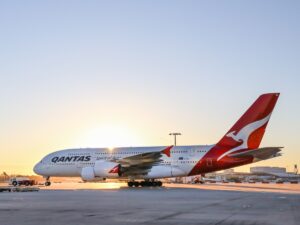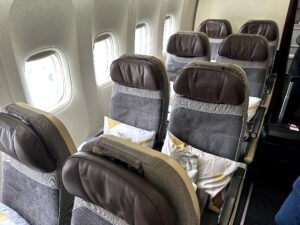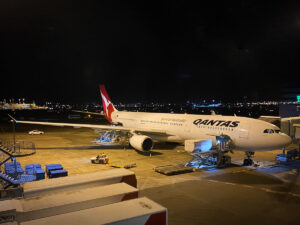
A week after Qantas posted a record annual profit, its competitor Virgin Australia has revealed a yearly loss of $653 million for the 2017-18 financial year.
But much of the loss can be attributed to asset write-downs and restructuring costs for the airline. Once the impact of these one-off costs are accounted for, Virgin is reporting a modest underlying profit of $109 million.
Despite the sixth-consecutive yearly loss, Virgin Australia CEO John Borghetti is talking up the result. Borghetti, who will resign within the next two years, believes Virgin Australia is now in a good position to return to profitability in the future.
Virgin Australia’s core domestic business has improved, with higher revenue and load factors. But the international business continues to struggle. Average international load factors decreased from 81% to 77% last year.
BITRE data for May 2018 – the most recent month for which statistics are available – reveals that Virgin’s new Hong Kong flights are particularly struggling. On average, Virgin Australia’s Melbourne-Hong Kong services were less than half full during May. In the same period, Qantas’ load factors to/from Hong Kong averaged 77% and Cathay Pacific flights were three-quarters full. Hong Kong Airlines, which will stop flying to Australia in October, had load factors around 52%. It will be interesting to see if Virgin’s results improve over time and with the addition of Sydney-Hong Kong Virgin flights.
Virgin’s flights to Los Angeles also struggled in May, with flights less than two-thirds full. Meanwhile, services to Port Moresby and Honiara averaged load factors less than 40%. But this is normal for these routes.
Some AFF members are concerned by the results…
QF’s operating margin of 12.9% vs VA’s 6.7% is pretty telling. They just can’t make the same money QF can. Also in the currently operating conditions, how do you still make a loss? (After tax taking out impairments is still a ~$80m loss)…
In a duopoly and perfect market conditions, I find it very difficult to understand why VA isn’t in better shape. The numbers for VA International and Tiger are really difficult to digest.
But others are unperturbed…
Underlying profit of $109 million. No longer recognising $452m in tax assets. Seems pretty good to me. I’ve been burn my virgin points on memories of Ansett. This makes me less worried.
Many people who invest into companies believe the first line you look at in the balance sheet is “cash in bank” and they have strong balances and much better free cashflow, up $34 million (free cash flow represents the cash a company can generate after required investment to maintain or expand its asset base. It is a measurement of a company’s financial performance and health.)
What do you make of the Virgin Australia loss? Join the discussion on the Australian Frequent Flyer forum: Virgin Australia posts underlying profit of $109M ($653M “loss” after writeoffs)












































































